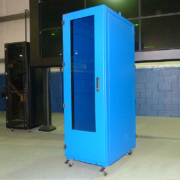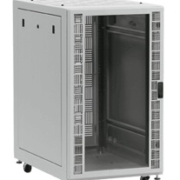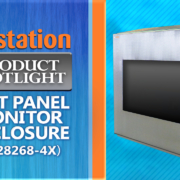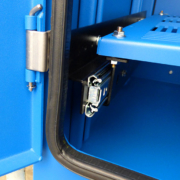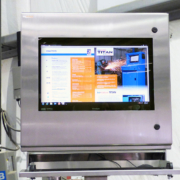Configuring a Climate Controlled Rack Enclosure
A reliable, heavy-duty rack enclosure will keep electronics safe from harmful elements, while maintaining security. When searching online for the best rack enclosure solution, it is critical to list all of the electronics to be housed inside of the rack enclosure. The end user must determine how many ‘U’ (rack mount space; 1 rack unit is 1.75 inches high) the enclosure needs to be and how the electronics will be installed. Servers and network equipment hold data that is mission critical and a component malfunction could be detrimental to an IT system and expensive to repair/replace.
Thermal management should also be considered.
Selecting a climate-controlled rack enclosure is contingent on a few variables. Installation location temperatures should be analyzed. Most equipment requires an operating temperature within 70-75° Fahrenheit. Humidity, ambient temperature, heat from in-use electronics, and a dirty environment will only complicate the situation. Always work with a reputable rack enclosure company and fill out a ‘thermal management worksheet’ to gain further insight into choosing the right cooling system for the job.
Cooling questions to ponder for a successful rack enclosure installation:
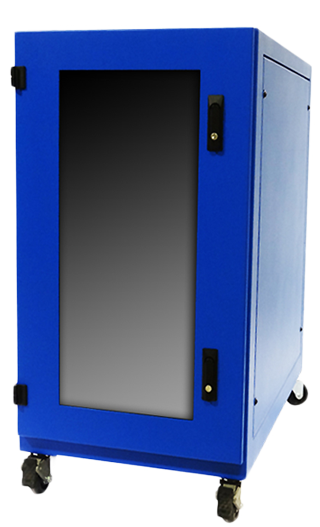 1. Does the cooling system include a temperature & humidity sensor?
1. Does the cooling system include a temperature & humidity sensor?
Efficient, well-run rack enclosure systems must maintain a consistent temperature and acceptable level of humidity. Many air conditioners have a temperature and humidity sensor built into the unit. However, when using cooling such as a fan, a separate humidity and temperature control may be advantageous. These sensors can be IP addressable and can provide alerts that the system is nearing an unacceptable temperature/humidity level and should be checked quickly.
2. Does the cooling system provide room to grow?
For the most streamlined process, select a cooling device that provides enough cooling power compared to the heat output on the inside of the rack enclosure. In addition, consider the system in 2, 5 or even 10 years. There is a good chance that the requirements will change. Since high quality enclosure systems are an investment, it may be beneficial to size up the air conditioner, filtered fan system, vortex cooling unit, or heat exchanger to accommodate future needs and equipment.
3. Is the cooling system scalable?
Understand the temperature fluctuations that a busy manufacturing plant in Alabama or Arizona, for example, will experience throughout the year. Exposure to elevated levels of humidity and extreme hot temperatures in the summer will require a different cooling solution than frosty winter months. Do not make the mistake of only being concerned with cooling in the summertime. Much like hot weather, electronics do not bode well in extreme cold temperatures.
Ambient temperatures – as well as temperature extremes – are important to debate when configuring a rack enclosure. The ambient temperature may help or hinder the thermal management required to provide an efficient system. Always err on the side of caution and prepare for the worst-case scenario. When it comes to deploying rack enclosures in harsh environments, it never hurts to be over prepared!
HAVE QUESTIONS? LET US KNOW HOW WE CAN BEST ASSIST YOU! CONTACT AN ‘ITSENCLOSURES EXPERT’ AT 1-800-423-9911 -or- SEND US AN EMAIL: INFO@ITSENCLOSURES.COM

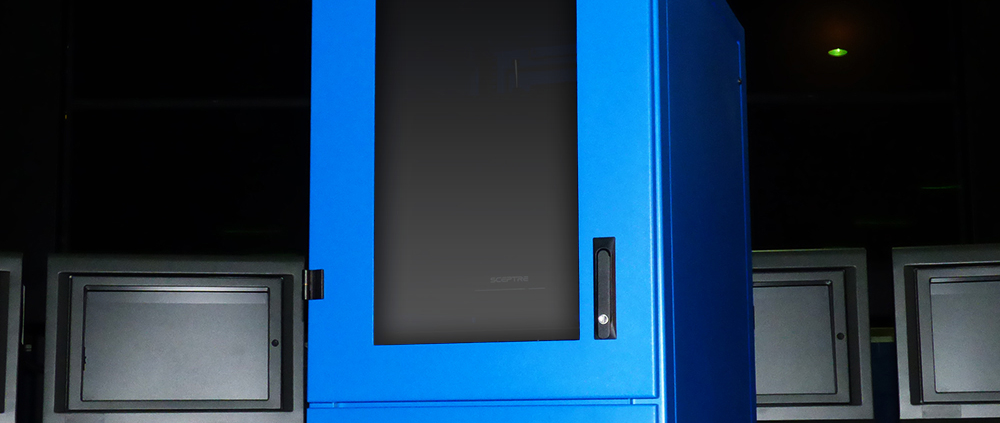
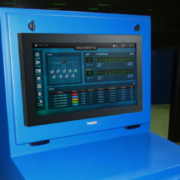
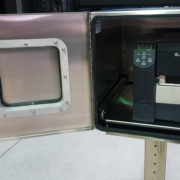 ITSENCLOSURES, 2022
ITSENCLOSURES, 2022 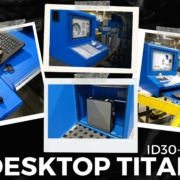 Copyright 2023
Copyright 2023 